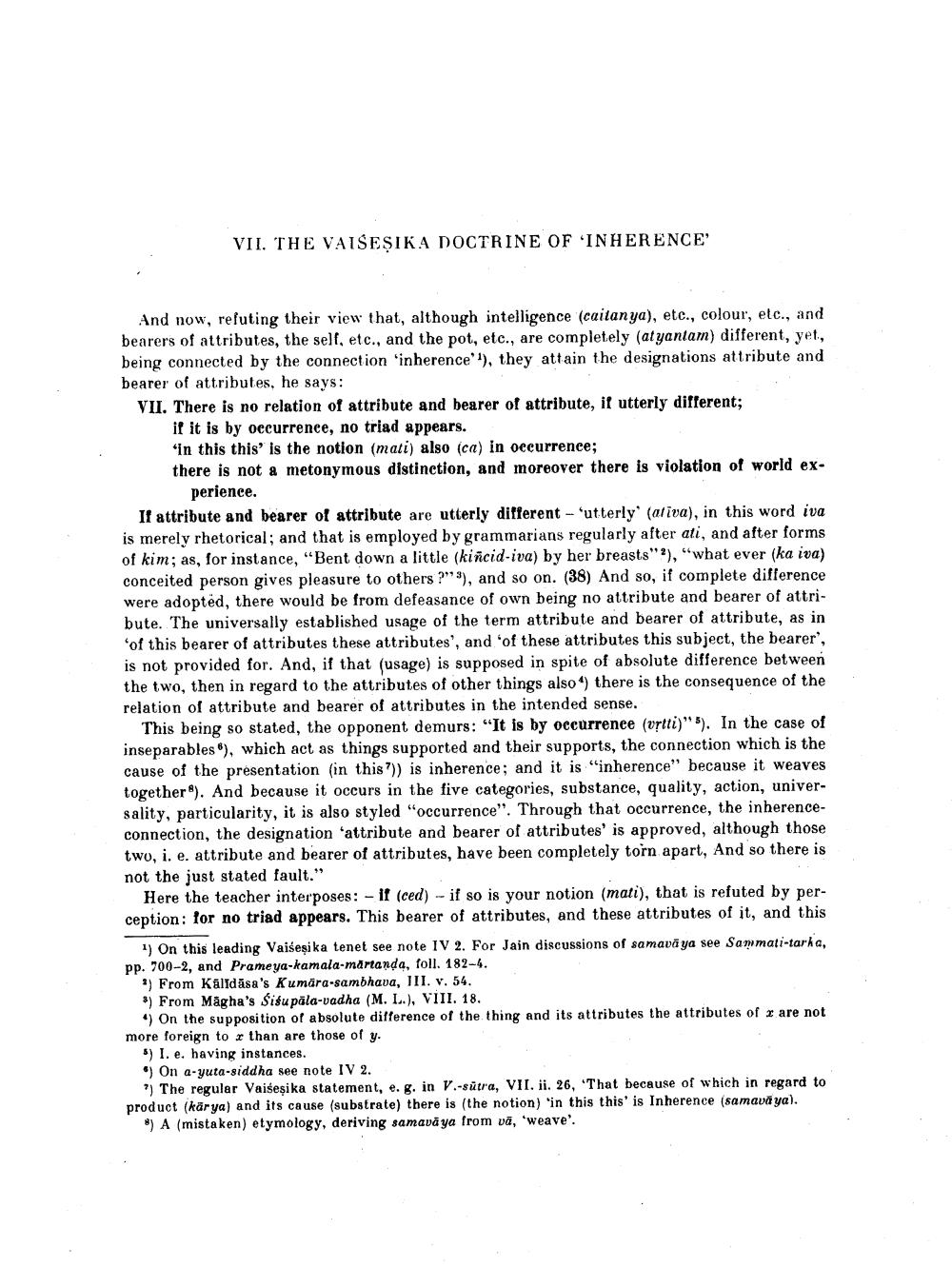________________
VII. THE VAISESIKA DOCTRINE OF 'INHERENCE
And now, refuting their view that, although intelligence (caitanya), etc., colour, etc., and bearers of attributes, the sell, etc., and the pot, etc., are completely (at yanlam) different, yet, being connected by the connection 'inherence), they attain the designations attribute and bearer of attributes, he says: VII. There is no relation of attribute and bearer of attribute, if utterly different;
it it is by occurrence, no triad appears. 'In this this is the notion (mati) also (ca) in occurrence; there is not & metonymous distinction, and moreover there is violation of world ex
perience. If attribute and bearer of attribute are utterly different - utterly' (ativa), in this word iva is merely rhetorical; and that is employed by grammarians regularly after ati, and after forms of kim; as, for instance, "Bent down a little (kincid-iva) by her breasts"), "what ever (ka iva) conceited person gives pleasure to others?"), and so on. (38) And so, if complete difference were adopted, there would be from defeasance of own being no attribute and bearer of attribute. The universally established usage of the term attribute and bearer of attribute, as in of this bearer of attributes these attributes', and 'of these attributes this subject, the bearer, is not provided for. And, if that (usage) is supposed in spite of absolute difference between the two, then in regard to the attributes of other things also there is the consequence of the relation of attribute and bearer of attributes in the intended sense.
This being so stated, the opponent demurs: "It is by occurrence (vrtti)" 5). In the case of inseparables), which act as things supported and their supports, the connection which is the cause of the presentation in this)) is inherence; and it is inherence" because it weaves together). And because it occurs in the five categories, substance, quality, action, universality, particularity, it is also styled "occurrence". Through that occurrence, the inherenceconnection, the designation 'attribute and bearer of attributes' is approved, although those two, i. e. attribute and bearer of attributes, have been completely torn apart, And so there is not the just stated fault."
Here the teacher interposes: - if (ced) - if so is your notion (mati), that is refuted by perception: for no triad appears. This bearer of attributes, and these attributes of it, and this
1) On this leading Vaišesi ka tenet see note IV 2. For Jain discussions of samavā ya see Sammati-tarha, pp. 700-2, and Prameya-kamala-martanda, foll. 182-4.
") From Källdāsa's Kumāra-sambhava, III. v. 54. *) From Magha's Sisu pāla-vadha (M. L.), VIII. 18.
) On the supposition of absolute difference of the thing and its attributes the attributes of u are not more foreign to than are those of y.
5) I. e. having instances. 9 On a-yuta-siddha see note IV 2.
The regular Vaiseșika statement, e. g. in V.-sutra, VII. ii. 26, 'That because of which in regard to product (karya) and its cause (substrate) there is (the notion) 'in this this is Inherence (samava ya).
8) A (mistaken) etymology, deriving samava ya from vä, 'weave'.




